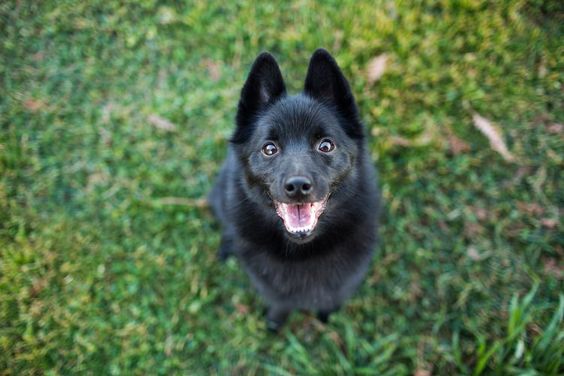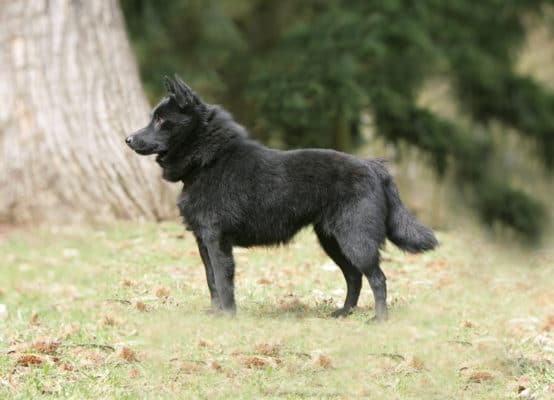Schipperke
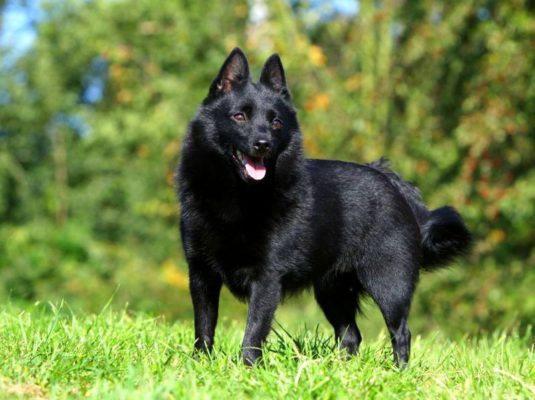
It is a charismatic dog. Each Schipperke has its personality. They are brilliant and aware of everything going on around them. They have the uncanny ability to understand what their owners are saying. The breed prefers the company of those they know well.
Table of Contents
Breed Information
| Another Name | Spitzke (until 1888), Spits (until 1888), Spitske (until 1888), Little Black Devil (Belgium), Little Captain (Flemish) |
| Origin | Belgium |
| Height | Males 28-33 cm Females 25-30 cm |
| Weight | Males 8-9 kg Females 6-7 kg |
| Fur | Abundant, thick, straight, and relatively coarse |
| Color | Black |
| Lifespan | 13-15 years |
| FCI Classification | Sheepdogs and Cattledogs (except Swiss Cattledogs) |
| Group | Dogs for children, dogs for protection, decorative dogs |
| Price | From $400 |
Breed Photos
Origin History
The name Schipperke translates from Flemish as “little shepherd” or “little captain” – and either translation would be appropriate. It originated in the St. Gery district of Brussels. For hundreds of years, it was a favorite of the shoemakers of the city. They used it to keep their workshops safe and to get rid of rats and mice. There was a long tradition of these merchants making exquisite forged brass collars for their dogs. And then, they would display both the dog and its jewelry at competition shows. Schipperke was also popular with people living and trading on the canal barges, where his talents were put to fair use.
Schipperke was first presented for evaluation at a show in Spa in 1882. Many of the dog’s modern traits were already well developed at that time. It received international attention and was exported to the United Kingdom and the United States in the 1880s. The Schipperke was one of the earliest breeds to be registered with big pet clubs.
Appearance
The Schipperke is sometimes mistakenly described as a Spitz. And while he may not be closely related to this family, he does have a compact, straight shape, and dense coat. He has an elongated head and a small dark black spout. Schipperke’s dark brown eyes are small, lively, and almond-shaped. His little triangular ears are held upright. They are always in motion in response to the slightest sound.
The body is stout and square. Its volume is slightly exaggerated by the thick fur that stands out on the neck, shoulders, and limbs. The chest is quite broad and deep, and the belly is moderately taut. Traditionally, the tail is very short. However, some are born without a seat or may have unusual or rudimentary tails.
Despite the compact, broad body contour, the limbs are relatively thin and graceful, but they should also be well built, without deviations. The very thick coat is always black. However, the undercoat can be dark gray, masked by longer primary hairs. The Schipperke is 25 to 35 cm tall and weighs 4 to 8 kg.
Character
It is a charismatic dog. Each Schipperke has its personality. They are brilliant and aware of everything going on around them. They have the uncanny ability to understand what their owners are saying. The breed prefers the company of those they know well.
Extremely loyal to his family, he is suspicious of strangers and is an excellent watchdog. If he feels the situation demands it, he will bite and defend his owners and their property. Not all members of the breed are good with other dogs because they can be stubborn and pushy. You need to train your dog in socialization from an early age.
Care
The Schipperke’s grooming is not complicated at all and is even pleasant. The breed is short-haired, the coat is smooth, does not roll into tangles, but it sheds. Molting is seasonal: spring and fall. Schipperke coat does not need a haircut. You must comb 2-3 times a week with a comb or brush to improve circulation and remove unwanted hair. During shedding, the coat should be combed every day. There is one more thing: if you keep a Schipperke outside, his undercoat and coat will be denser, unlike when living indoors. If indoors, the shedding will be more noticeable, and the coat will be correspondingly thinner.
Training
Most owners would agree that training a Schipperke requires a great deal of patience and an equal amount of self-confidence. These dogs do not lack intelligence but often prefer to determine their actions rather than being guided by humans. These qualities are considered one of the reasons why they excel in search and rescue and detective work. They need to be trained with a consistent, firm approach.
Common Diseases
Although Schipperke breed clubs around the world are working hard to eliminate hereditary health problems, the breed has some significant issues:
- diabetes mellitus;
- epilepsy;
- hypothyroidism;
- legg’s disease and Teles Pertes’ disease;
- mucopolysaccharidosis.
Nutrition
The Schipperke’s diet must be correct and balanced. The breed can eat ready-made premium food or natural food. The main thing is that Schipperke puppies get the necessary vitamins and minerals during growth, and adults do not eat leftovers from the table. You can also consult with the breeder of the puppies, find out what kind of food the dog is used to and what is better to feed.
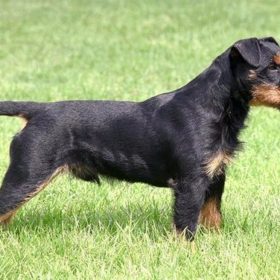 Jagdterrier
Jagdterrier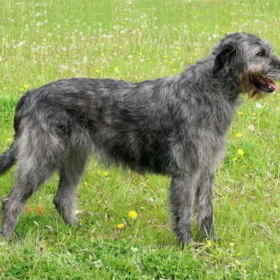 Irish Wolfhound
Irish Wolfhound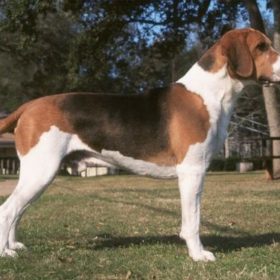 Harrier
Harrier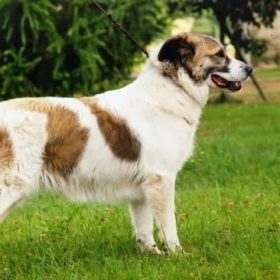 Aidi
Aidi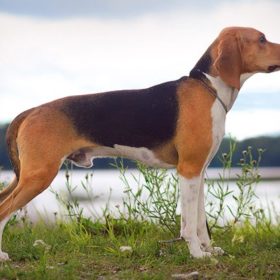 Estonian Hound
Estonian Hound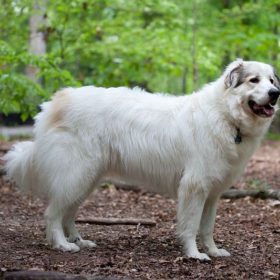 Pyrenean Mountain Dog
Pyrenean Mountain Dog